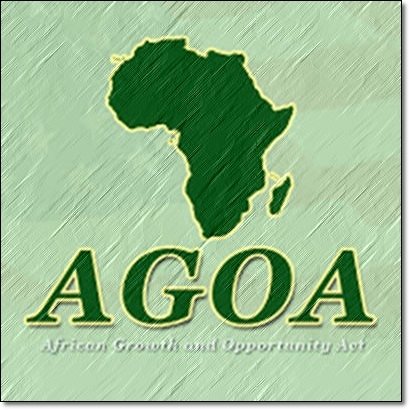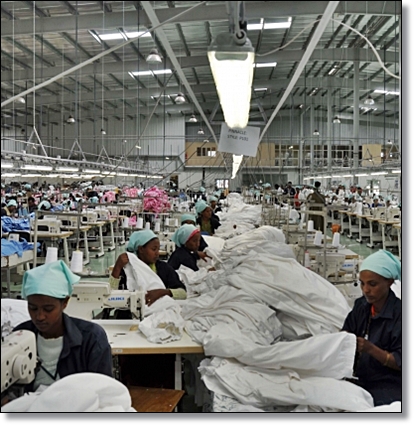Sustainable Transformation through Trade and Technology

 |
| A textile firm Photo courtesy |
It is a fact that since the AGOA legislation went into effect in 2000, exports under AGOA have increased more than 500 percent, from $8.15 billion in 2001 to $53.8 billion in 2011. However, it is unfortunate that about 90 percent of these exports are still oil products, which underscores Africa’s need to diversify its exports to the US and also to negotiate better terms for non-oil products with the US. Under AGOA, the volume of non-energy exports to the U.S. has increased 275 percent, from $1.2 billion to $4.5 billion between 2001 and 2011. The number of countries exporting non-oil products under AGOA has also increased from 13 to 22 during this period.
AGOA has generated about 350,000 direct jobs and one million indirect jobs in Africa, especially in the textile and apparel sector. As is evident from these statistics, US investment lies more in the capital intensive sector of mining and extractive industries. However, it is the manufacturing sector that actually brings about growth in jobs and socio-economic development.
It must also be pointed out that some eligible countries have not taken advantage of AGOA at all. Similarly, total U.S. trade (imports plus exports) with African countries excluding North Africa in 2010 and 2011 grew by 29.5% and 17% respectively, the top U.S. export markets being South Africa, Nigeria Angola, Mauritius, Ghana and Ethiopia while the top export categories were Machinery and parts (22%), followed by transportation equipment (17%), cereals (8%), mineral fuels (8%), aircraft and parts (7%), and electrical machinery (6%). In 2011, U.S. exports to Africa, excluding North Africa, accounted for more than 100,000 jobs in the US. With oil and gas contributing the largest share of imports to the US under AGOA, it is clear that AGOA has contributed to the industrialization of and job creation in the US.
It is worth asking ourselves: for the 12 years that AGOA has been in operation, how much transformation and technology have been involved? If we continue to export only raw materials under AGOA, we will not achieve one of its objectives which is export diversification.There is a general conviction from both parties that AGOA did not develop its full potential as an engine of intra-regional integration and that the benefits of AGOA have not been maximized. AGOA should be extended for a longer time in a predictable manner and the range of products eligible for AGOA imports expanded. This will help promote non extractive investments in the continent. There is also need for more business to business interaction and to achieve that, more work on raising awareness among women and youth entrepreneurs and small and medium size businesses should be undertaken, as well as capacity building. In this regard, the US is planning to review its trade hubs in order to make them more efficient and effective.
It is also evident that those countries that have put in place AGOA export strategies have performed better than others, so there is need to share experience in this area. Equally important is to improve production strategies, quality standards and value addition. In this regard, the contribution of Chambers of Commerce and Industry, trade promotion agencies, standards organisations, women and youth entrepreneurs as well as small and medium enterprises is necessary. But there could also be more support from the US side in the form of a new AGOA compact, which would target Member States that have developed comprehensive AGOA export strategies. The AGOA compact would, in addition, enable both Africa and the US to monitor and evaluate success of AGOA export programmes of eligible countries.
To contribute to the debate on AGOA’s future - for what period should the legislation be extended, and how can it be amended to more effectively contribute to encouraging more trade and investment by U.S. companies in Africa, and other issues, there have been some preparatory activities, such as, numerous meetings of the African Group in Washington, studies prepared by the AU Commission together with the United Nations Economic Commission for Africa, the African Trade Policy Centre and Brookings Institution, as well as a mid-term review in Washington.
Findings point to a strong case for continuing or expanding the current AGOA preferences beyond 2015.
By H. E. Mrs. Fatima Haram Acyl,
Commissioner for Trade and Industry of the African Union Commission.
